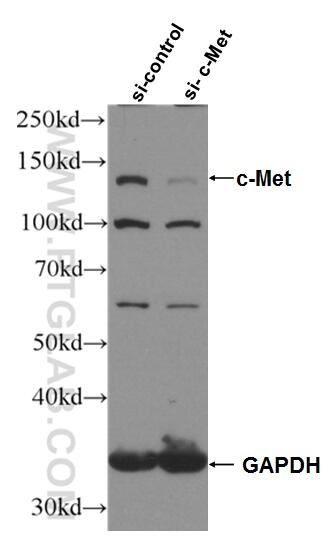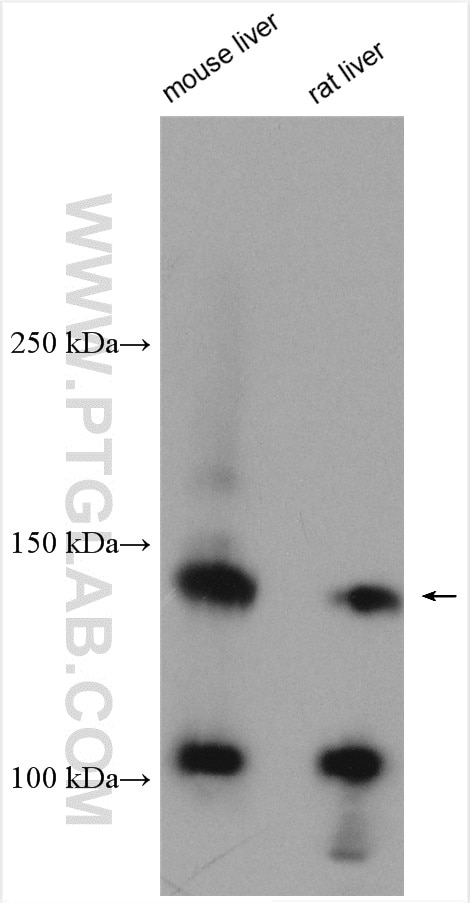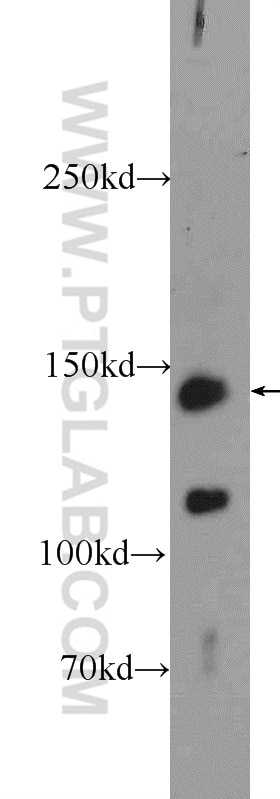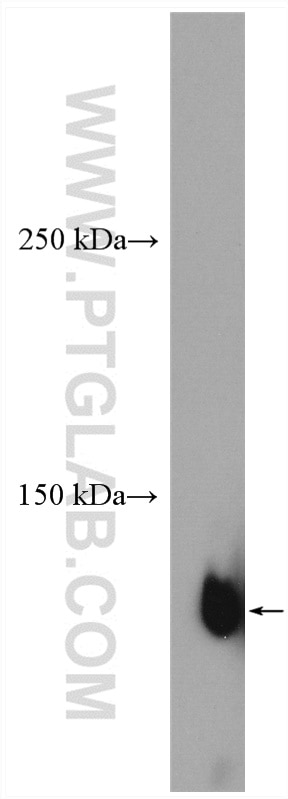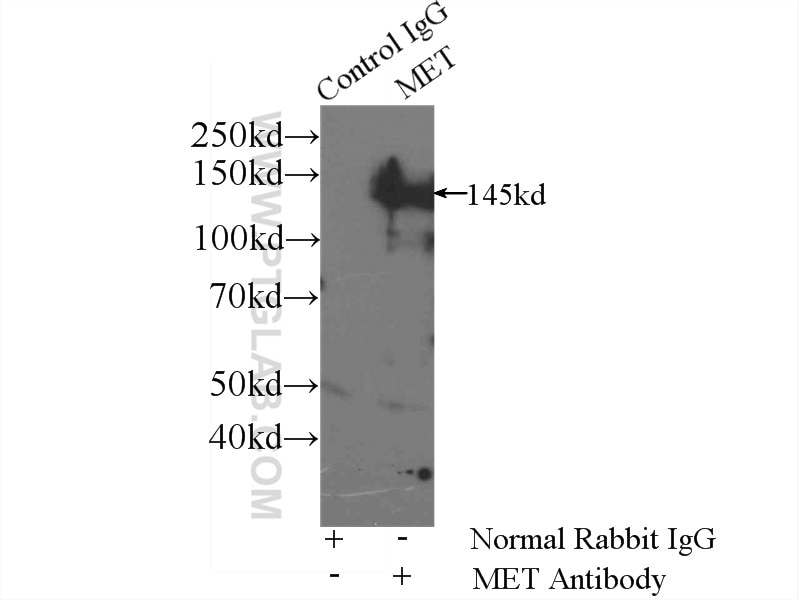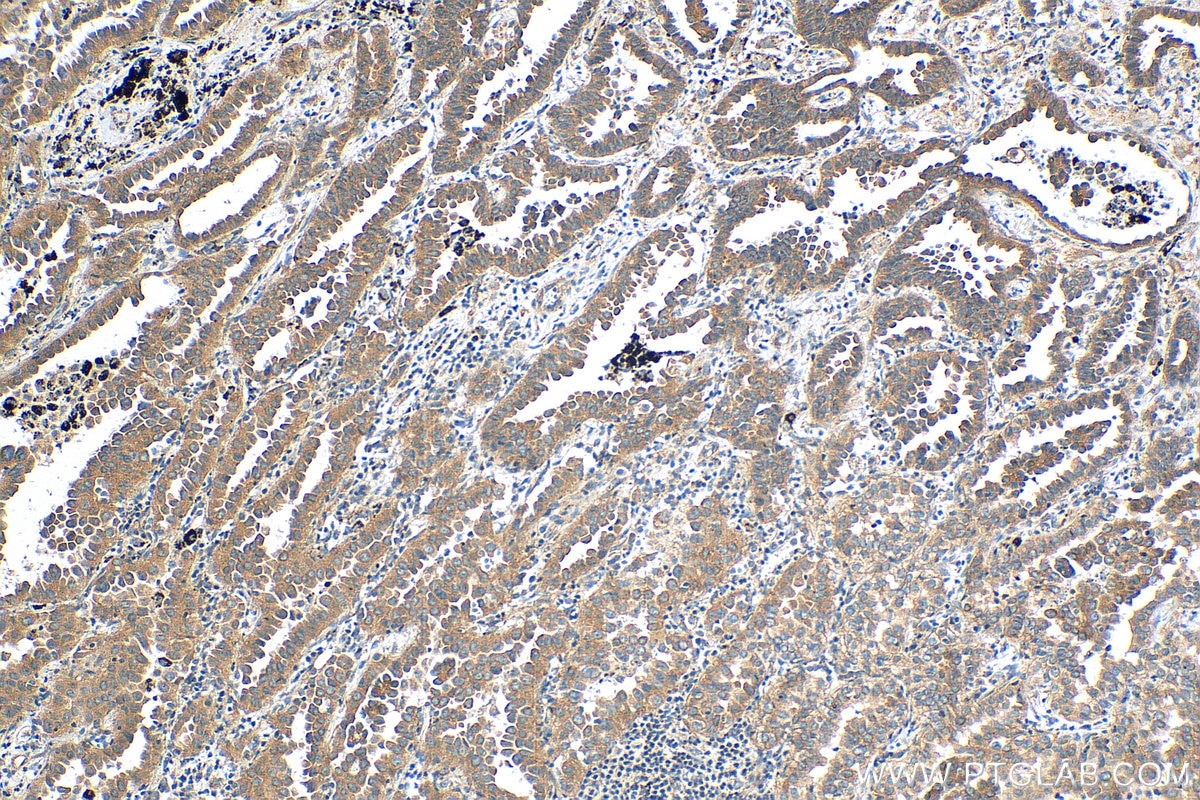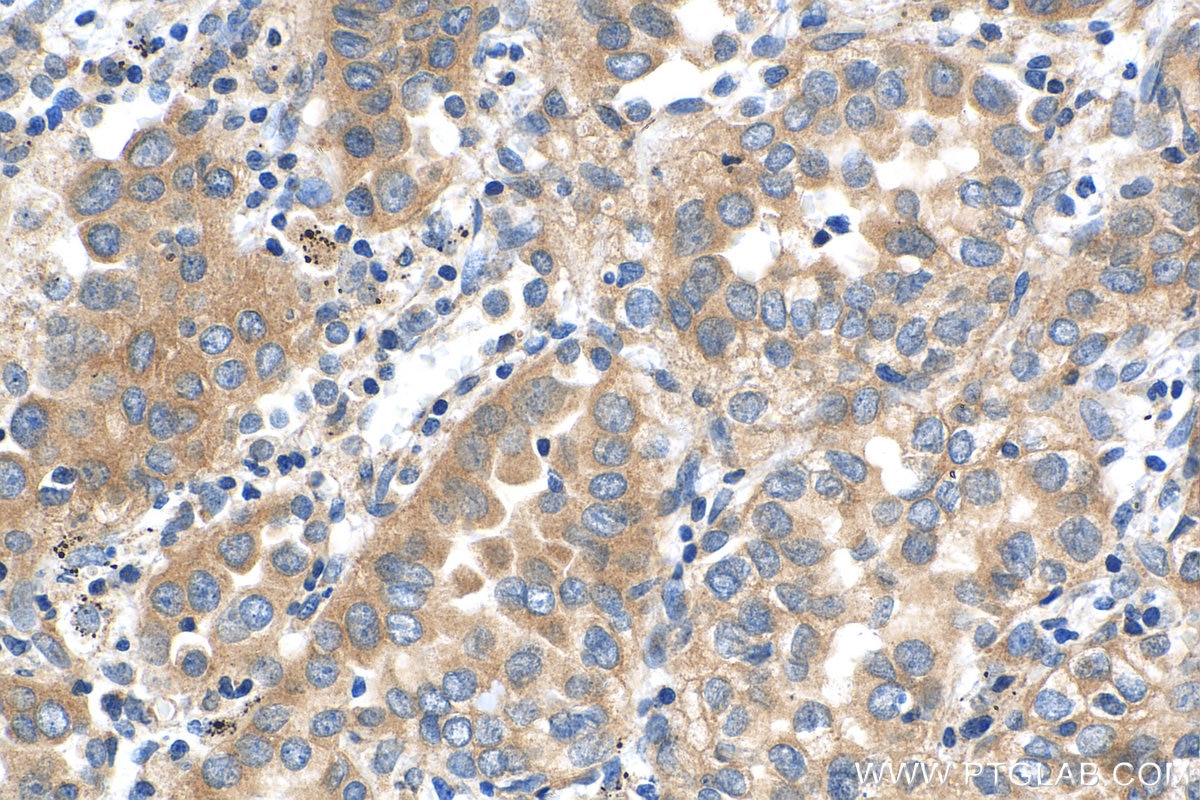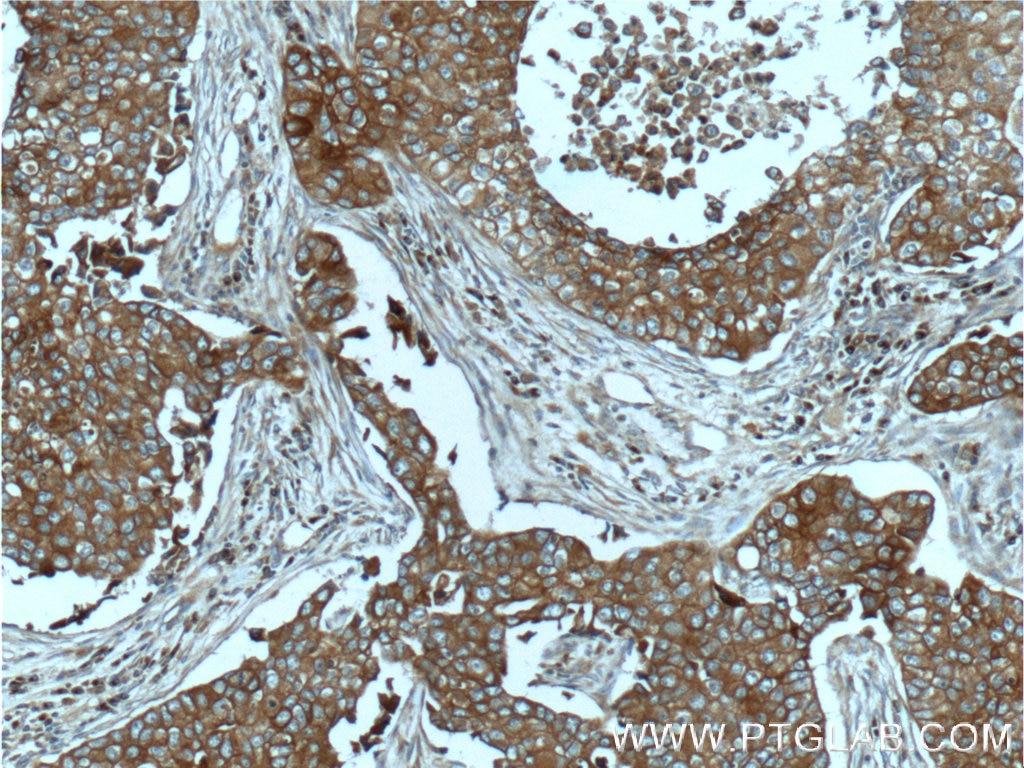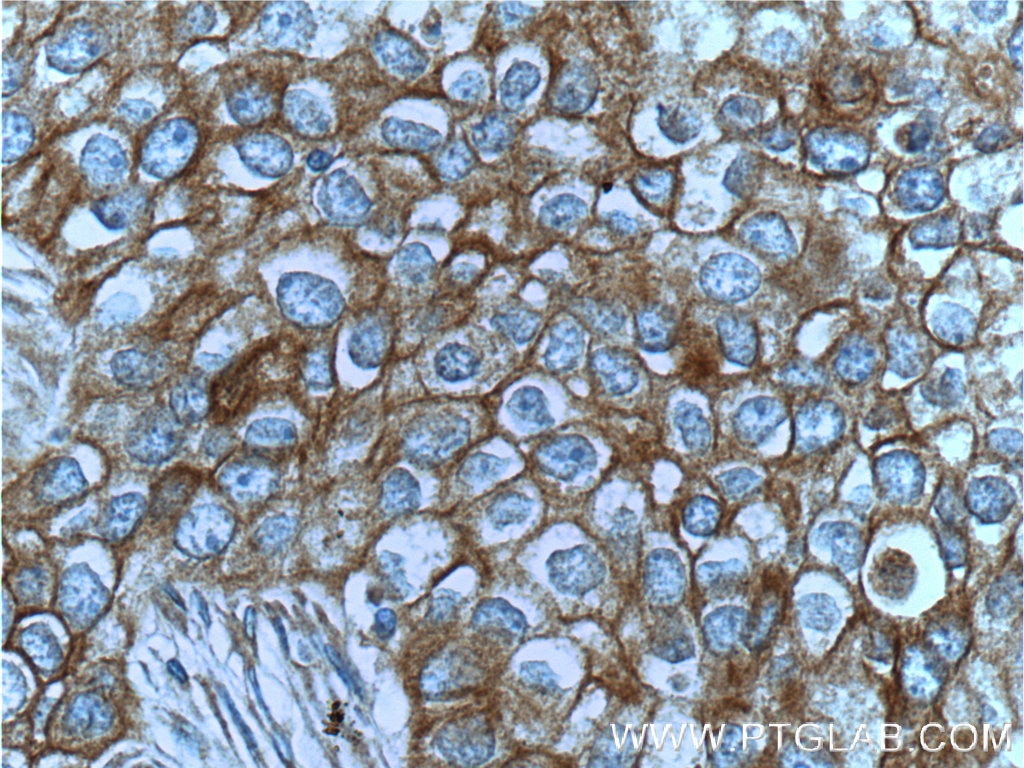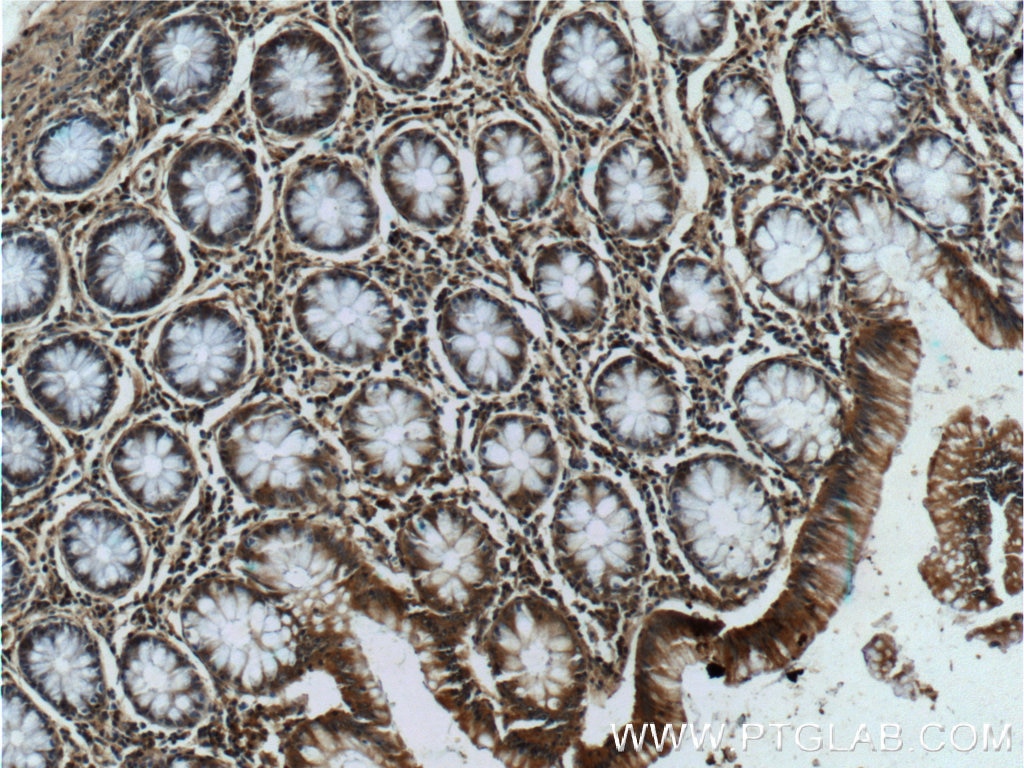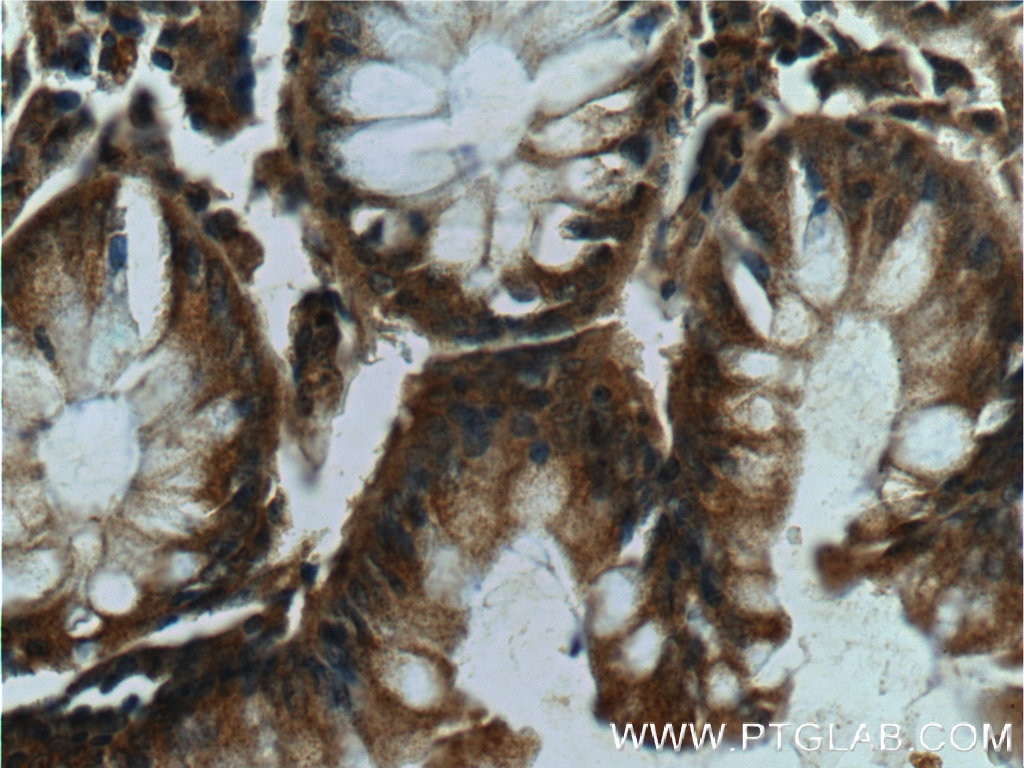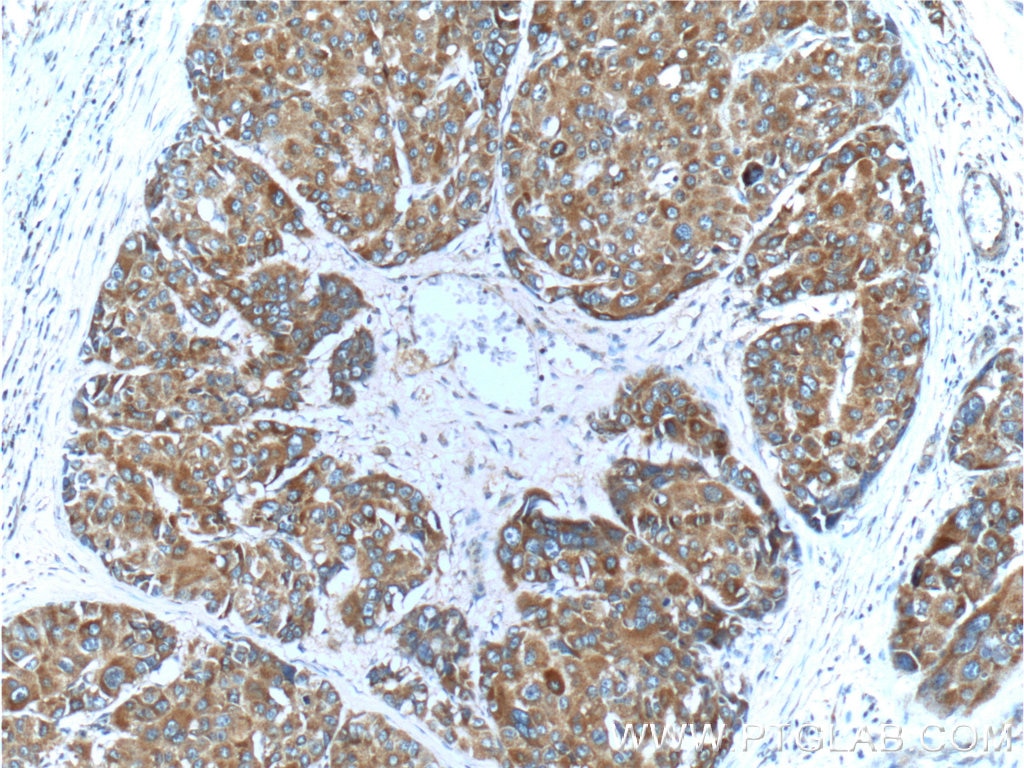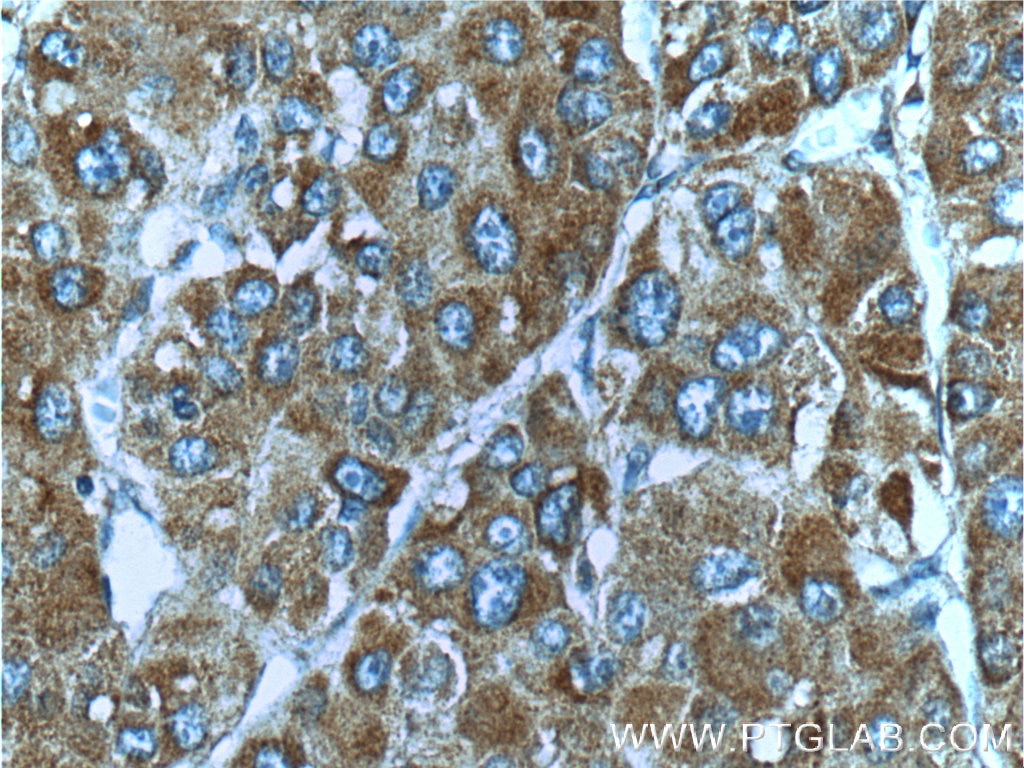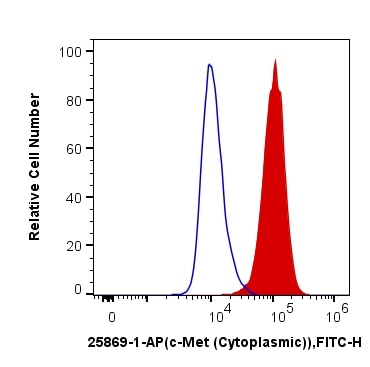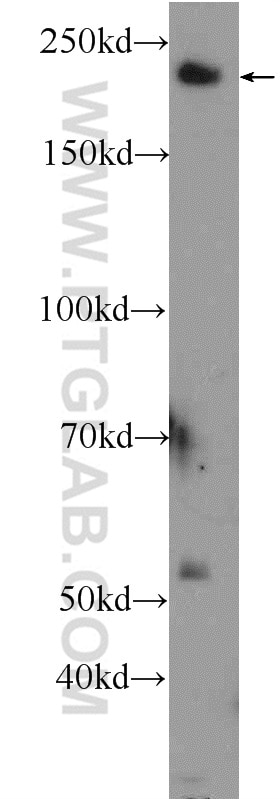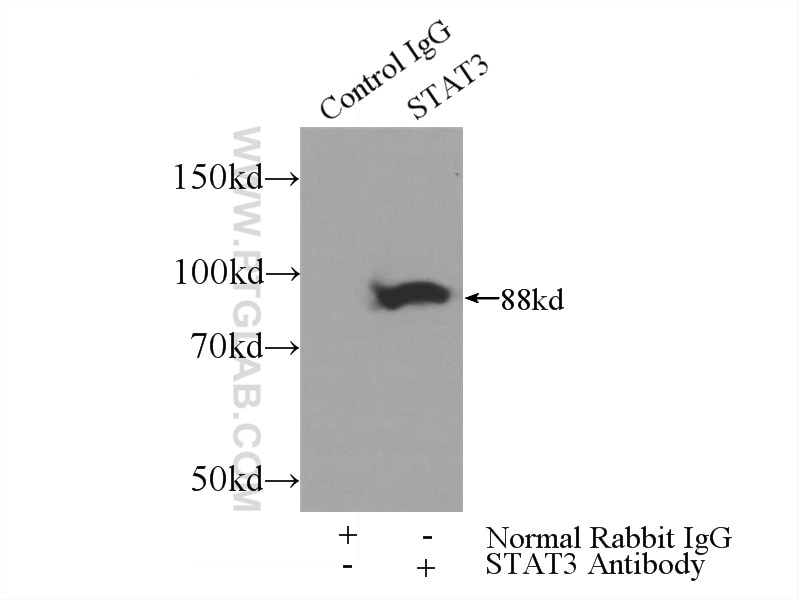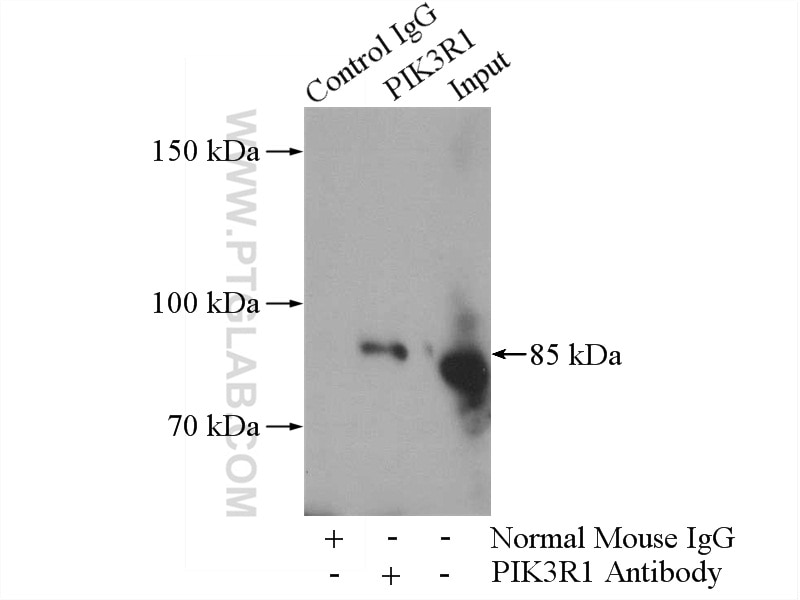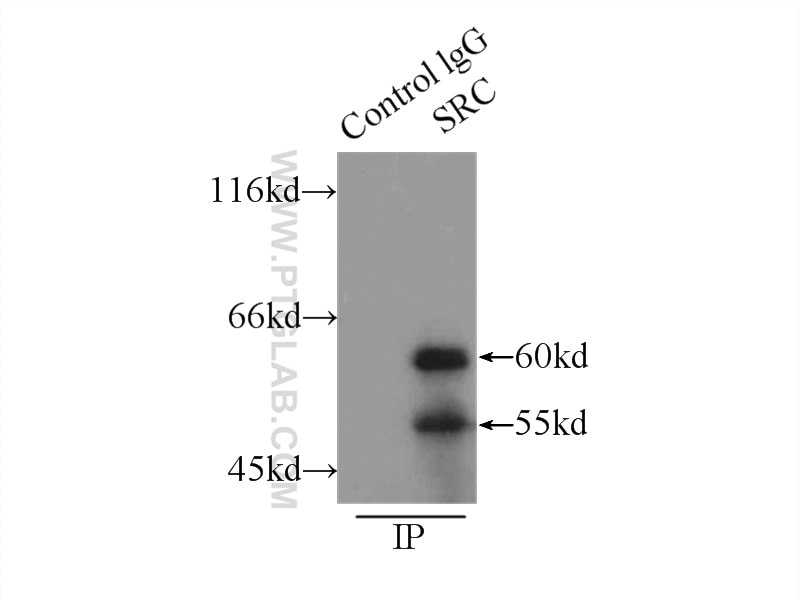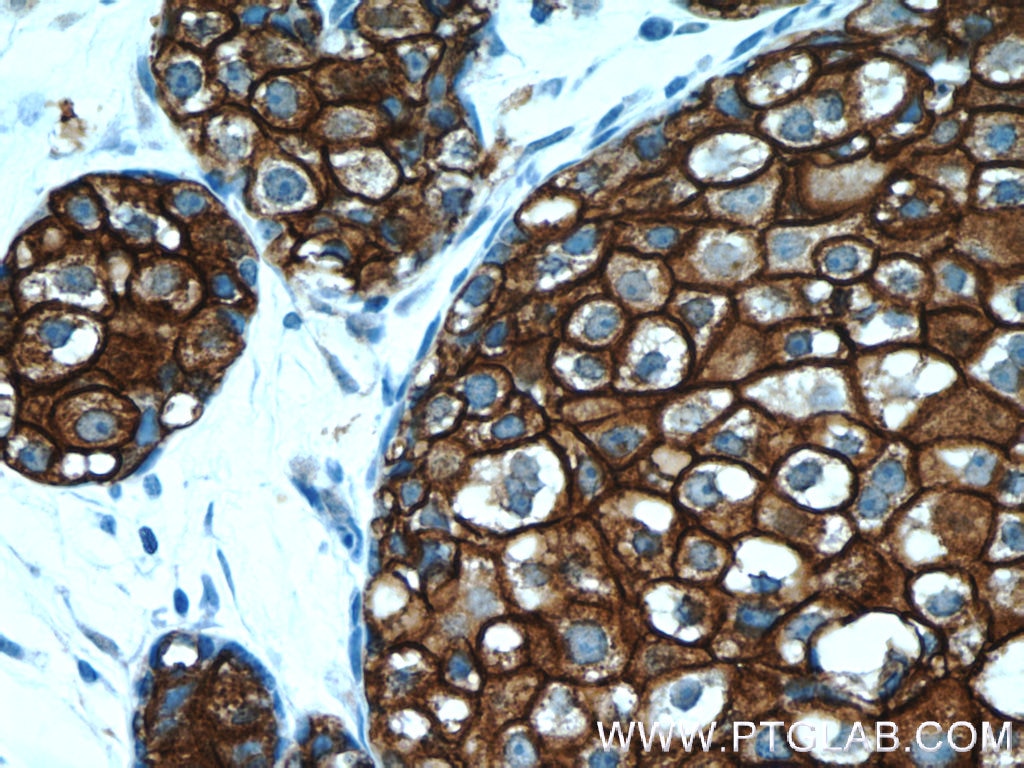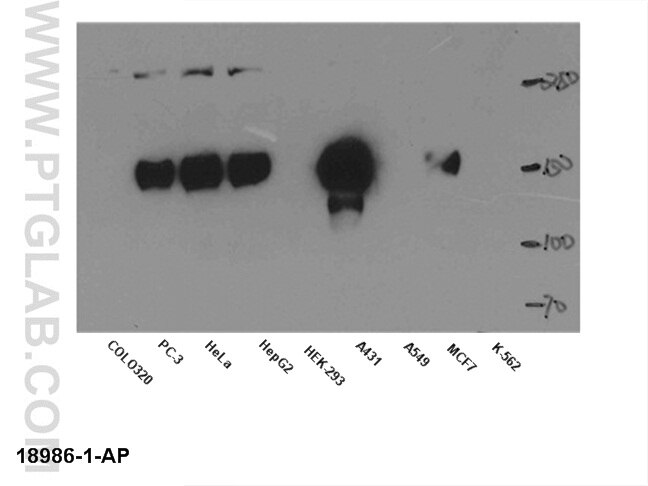- Phare
- Validé par KD/KO
Anticorps Polyclonal de lapin anti-c-Met (Cytoplasmic)
c-Met (Cytoplasmic) Polyclonal Antibody for FC (intra), IHC, IP, WB, ELISA
Hôte / Isotype
Lapin / IgG
Réactivité testée
canin, Humain, rat, souris
Applications
WB, IP, IHC, IF, FC (intra), CoIP, ELISA
Conjugaison
Non conjugué
N° de cat : 25869-1-AP
Synonymes
Galerie de données de validation
Applications testées
| Résultats positifs en WB | tissu hépatique de souris, cellules A431, cellules HepG2, cellules MDCK, tissu hépatique de rat |
| Résultats positifs en IP | cellules HeLa |
| Résultats positifs en IHC | tissu de cancer du poumon humain, tissu de cancer du foie humain, tissu de cancer du sein humain, tissu de côlon humain il est suggéré de démasquer l'antigène avec un tampon de TE buffer pH 9.0; (*) À défaut, 'le démasquage de l'antigène peut être 'effectué avec un tampon citrate pH 6,0. |
| Résultats positifs en cytométrie | cellules HeLa |
Dilution recommandée
| Application | Dilution |
|---|---|
| Western Blot (WB) | WB : 1:200-1:1000 |
| Immunoprécipitation (IP) | IP : 0.5-4.0 ug for 1.0-3.0 mg of total protein lysate |
| Immunohistochimie (IHC) | IHC : 1:500-1:2000 |
| Flow Cytometry (FC) | FC : 0.40 ug per 10^6 cells in a 100 µl suspension |
| It is recommended that this reagent should be titrated in each testing system to obtain optimal results. | |
| Sample-dependent, check data in validation data gallery | |
Applications publiées
| KD/KO | See 5 publications below |
| WB | See 33 publications below |
| IHC | See 10 publications below |
| IF | See 2 publications below |
| IP | See 2 publications below |
| CoIP | See 1 publications below |
Informations sur le produit
25869-1-AP cible c-Met (Cytoplasmic) dans les applications de WB, IP, IHC, IF, FC (intra), CoIP, ELISA et montre une réactivité avec des échantillons canin, Humain, rat, souris
| Réactivité | canin, Humain, rat, souris |
| Réactivité citée | rat, Humain, souris |
| Hôte / Isotype | Lapin / IgG |
| Clonalité | Polyclonal |
| Type | Anticorps |
| Immunogène | c-Met (Cytoplasmic) Protéine recombinante Ag23140 |
| Nom complet | met proto-oncogene (hepatocyte growth factor receptor) |
| Masse moléculaire calculée | 1390 aa, 155 kDa |
| Poids moléculaire observé | 145 kDa |
| Numéro d’acquisition GenBank | BC130420 |
| Symbole du gène | MET |
| Identification du gène (NCBI) | 4233 |
| Conjugaison | Non conjugué |
| Forme | Liquide |
| Méthode de purification | Purification par affinité contre l'antigène |
| Tampon de stockage | PBS avec azoture de sodium à 0,02 % et glycérol à 50 % pH 7,3 |
| Conditions de stockage | Stocker à -20°C. Stable pendant un an après l'expédition. L'aliquotage n'est pas nécessaire pour le stockage à -20oC Les 20ul contiennent 0,1% de BSA. |
Informations générales
c-Met (also named MET or HGFR) is a receptor tyrosine kinase that transduces signals from the extracellular matrix into the cytoplasm by binding to the HGF ligand. c-Met regulates many physiological processes including proliferation, scattering, morphogenesis, and survival. The primary single-chain precursor protein is post-translationally cleaved to produce the alpha and beta subunits, which are disulfide-linked to form the mature receptor. Overexpression and/or mutation of c-Met has been reported in various human malignancies, including lung cancer, breast cancer, head and neck cancer, gastric cancer, colorectal cancer, bladder cancer, uterine cervix carcinoma, esophageal carcinoma, c-Met could serve as an important therapeutic target (PMID: 26036285). The c-met receptor is a 190-kD glycoprotein consisting of a 145-kD membrane-spanning beta chain and a 50-kD alpha chain (PMID: 7806559). In Western blot, this antibody produces bands of unknown identity at 55 and 100 kDa.
Protocole
| Product Specific Protocols | |
|---|---|
| WB protocol for c-Met (Cytoplasmic) antibody 25869-1-AP | Download protocol |
| IHC protocol for c-Met (Cytoplasmic) antibody 25869-1-AP | Download protocol |
| IP protocol for c-Met (Cytoplasmic) antibody 25869-1-AP | Download protocol |
| Standard Protocols | |
|---|---|
| Click here to view our Standard Protocols |
Publications
| Species | Application | Title |
|---|---|---|
Acta Pharmacol Sin GPR97 deficiency ameliorates renal interstitial fibrosis in mouse hypertensive nephropathy | ||
Clin Transl Med Ursodesoxycholic acid alleviates liver fibrosis via proregeneration by activation of the ID1-WNT2/HGF signaling pathway. | ||
Mol Ther Nucleic Acids miRNA in food simultaneously controls animal viral disease and human tumorigenesis. | ||
Mol Ther Nucleic Acids Shrimp miR-34 from Shrimp Stress Response to Virus Infection Suppresses Tumorigenesis of Breast Cancer. | ||
Front Oncol SEMA3C Promotes Cervical Cancer Growth and Is Associated With Poor Prognosis. |
